György Kepes
Hungarian/American, 1906—2001
About
György Kepes
Hungarian/American, 1906—2001
György Kepes was born in Selyp, Hungary and studied under painter Istvan Csók at the Royal Academy of Fine Arts in Budapest. Although trained in impressionism, György Kepes quickly developed an interest in more avant-garde and abstract visual styles, in particular the visual effects of light. He began experimenting with photograms – a technique where images are made by placing objects onto photosensitive paper and then exposing the paper to light. As György Kepes became increasingly interested in visual theory and technology, he used devices such as x-ray machines, electron microscopes, sonar, and radar in order to capture unseen images.
In 1930 György Kepes moved to Berlin to work as a publication, exhibition and stage designer. It was there that he was invited to join the design studio of artist and Bauhaus professor László Moholy-Nagy, where the two collaborated for years to come. In 1937, alongside Moholy-Nagy, Kepes emigrated to the U.S. and was subsequently invited to head the curricular area in Light and Color at the New Bauhaus, Chicago, now known as the Institute of Design. In 1944 Kepes published the Language of Vision, an influential text, which outlined his theories on visual communication through photography, cinema and design. Kepes went on to teach at MIT in 1946, and in 1967 he founded MIT’s Center for Advanced Visual Studies (CAVS).
Throughout his years at MIT Kepes continued to paint as well as explore a variety of photographic techniques including: double exposures and photograms; as well as going on to develop his “photo-drawings.” In his “photo-drawings,” Kepes experimented with applying paint to glass plates, then shining light through them, using them as one would use a traditional photographic negative. Many of the resulting images embody a combination of his interest in science and technology with his passion for art and design. Kepes’ work in both the sciences and arts is considered influential and innovative, and his theories of light, design and imagery continue to be relevant today.
In 2019 the Robert Koch Gallery staged the exhibition György Kepes: New Bauhaus in America, with an accompanying 68 page monograph of the same title, which served to commemorated the 100 year anniversary of the founding of the original Bauhaus School in Germany. The exhibition was likely one of the most comprehensive exhibitions of György Kepes’s work in decades, with 48 works, plus two collaborations with M. Halberstadt. Also included in the exhibition were work from others in the New Bauhaus milieu, including mixed media works by László Moholy-Nagy (gouache and ink on paper, serigraph on paper, and vintage photogram), along with photograms by Arthur Siegel, solarized photographs by M. Halberstadt, along with experimental light and color abstractions by Henry Holmes Smith.
Featured Work
György Kepes
Untitled (Box and eye), 1949
Collage with gouache on board
24 x 17 3/4 in. image and mount
György Kepes
Untitled (Wood, blue gears, white shaded sphere, and saw blade), c. 1938
Gouache and ink on board
17 7/8 x 13 3/8 in. image on 21 x 14 1/4 in. mount
György Kepes
Untitled (Skeleton in frame with newspaper), c. 1938-1940
Collage with newspaper, gouache, ink and photograph
22 x 13 3/4 in. image and mount
György Kepes
Untitled (Lily and hairpins), 1938
Vintage gelatin silver print, photogram
13 1/2 x 10 3/4 in.
György Kepes
Untitled (String Structure, Lines, Circles), c. 1940
Vintage gelatin silver print
13 7/8 x 10 7/8 in.
György Kepes
Untitled (Magnetic fields and compass), 1938-1939
Vintage gelatin silver print from photogram negative
13 3/16 x 10 3/8 in.
György Kepes
Untitled (Magnetic fields and compass), 1938-1939
Vintage gelatin silver print, photogram with ink
13 1/4 x 10 1/8 in.
György Kepes
Solid Forms, 1939-41 / printed later
Gelatin silver print
19 5/8 x 15 1/2 in.
György Kepes
Magnetic Fields, 1938 / printed later
Gelatin silver print
19 3/4 x 15 5/8 in.
György Kepes
Untitled (Cone and light), 1938
Vintage gelatin silver print, photogram
13 15/16 x 11 1/8 in.
György Kepes
Untitled (Abstraction with circular and square lines), 1939-1940
Vintage gelatin silver print, photogram
15 3/8 x 22 1/4 in.
György Kepes
Untitled (Hands), 1939
Vintage gelatin silver print, photogram
13 7/8 x 11 1/16 in.
György Kepes
Untitled (Hands and string), 1940
Vintage gelatin silver print, photogram
13 7/8 x 10 7/8 in.
György Kepes
Untitled (Hand with crossed lines), 1939-40
Vintage gelatin silver print with photogram
13 7/8 x 11 in.
György Kepes
High Speed Photograph, 1948
Vintage gelatin silver print
13 11/16 x 11 in. image on 13 7/8 x 11 in. sheet
György Kepes
Untitled (Hand, mortar and pestle), 1938
Vintage gelatin silver print, photogram
12 7/8 x 11 in.
György Kepes
Untitled (Hand, mortar and pestle), 1938
Vintage gelatin silver print from photogram negative
14 1/4 x 11 3/16 in.
György Kepes
Untitled (Hand, mortar and pestle, dark), 1938
Solarized vintage gelatin silver print from photogram negative
12 7/8 x 10 7/8 in.
György Kepes
Untitled (Beaker), 1940
Vintage gelatin silver print, photogram
10 x 8 in.
György Kepes
Untitled, 1939
Vintage gelatin silver print
13 13/16 x 10 15/16 in.
György Kepes
Untitled, 1940
Vintage gelatin silver print & halftone collage with ink
György Kepes
Untitled (Tapered object, small cone), 1940
Vintage gelatin silver print
13 3/8 x 9 1/2 in.
György Kepes
Untitled (Tapered object), 1940
Vintage gelatin silver print
14 x 10 7/8 in.
György Kepes
Untitled (Tapered object), 1940
Vintage gelatin silver print
14 x 10 1/2 in.
György Kepes
Untitled (Light reflection), 1938
Vintage gelatin silver print
14 x 11 3/16 in.
György Kepes
Untitled (Weed and organic abstract), 1938
Vintage gelatin silver print
14 x 11 1/16 in.
György Kepes
Untitled (Tree in winter with tulips), 1938
Vintage gelatin silver print
13 3/4 x 10 3/4 in.
György Kepes
Untitled (Box template), 1939
Vintage gelatin silver print
14 1/4 x 11 1/4 in.
György Kepes
Bread and Light, 1937
Vintage gelatin silver print
19 13/16 x 15 13/16 in.
György Kepes
Untitled (Prism, compass, grid), 1938
Vintage gelatin silver print
13 1/4 x 10 1/8 in.
György Kepes
Untitled, 1940
Vintage gelatin silver print, montage from multiple processes
13 3/4 x 10 15/16 in.
György Kepes
Untitled (Compass and letterpress type), 1938-1939
Vintage gelatin silver print
13 7/8 x 11 1/8 in.
György Kepes
Light and line pattern, 1940
Vintage gelatin silver print
12 9/16 x 10 1/4 in.
György Kepes
Untitled (Gears, paper rolls), 1940-1941
Vintage gelatin silver print
14 x 11 1/16 in.
György Kepes
Untitled (Tank silhouette), 1942
Vintage gelatin silver print, photogram
10 7/8 x 13 13/16 in.
György Kepes
Solarized Portrait, c. 1938
Solarized vintage gelatin silver print
13 13/16 x 11 1/8 in.
György Kepes
Untitled (Portrait), 1938
Vintage gelatin silver print
14 x 11 3/8 in.
György Kepes
Untitled (Young Juliet Kepes), 1938
Vintage gelatin silver print
13 x 9 9/16 in.
György Kepes
Untitled (Portrait), Date unknown
Solarized vintage gelatin silver print
13 7/8 x 11 in.
György Kepes
Untitled (Young Juliet Kepes), 1938
Vintage gelatin silver print
9 15/16 x 9 in.
György Kepes
Untitled (Portrait), c. 1939
Solarized vintage gelatin silver print
14 1/8 x 10 7/8 in.
György Kepes
Untitled (Bomb print 2), 1939-1940
Vintage gelatin silver print, photomontage
13 15/16 x 11 1/16 in. image and sheet
György Kepes
Untitled (Burnt newspaper and 2 pebbles), c. 1938-1940
Vintage gelatin silver print
19 1/4 x 15 1/2 in.
György Kepes
Untitled, c. 1940
Gelatin silver print
13 9/16 x 11 7/8 in.
György Kepes
Untitled, 1942
Vintage gelatin silver print, photomontage
15 1/8 x 19 11/16 in. image and sheet
György Kepes
Optical Deformation, 1942
Vintage gelatin silver print
16 1/4 x 14 in.
György Kepes
Featured Work
-
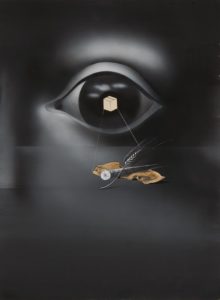
Untitled (Box and eye)
-
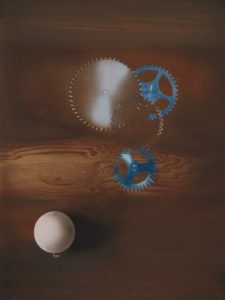
Untitled (Wood, blue gears, white shaded sphere, and saw blade)
-
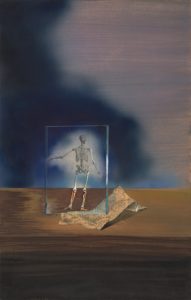
Untitled (Skeleton in frame with newspaper)
-
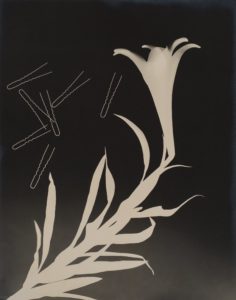
Untitled (Lily and hairpins)
-
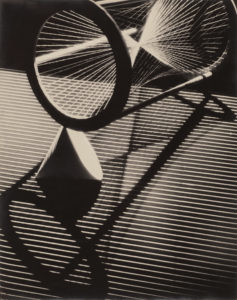
Untitled (String Structure, Lines, Circles)
-
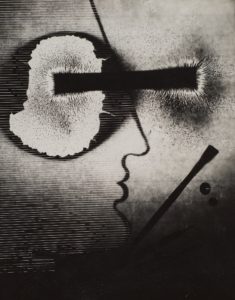
Untitled (Magnetic fields and compass)
-
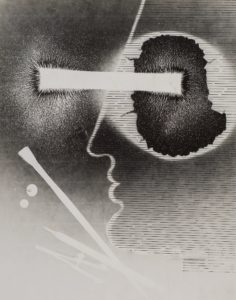
Untitled (Magnetic fields and compass)
-
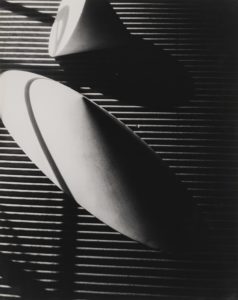
Solid Forms
-

Magnetic Fields
-
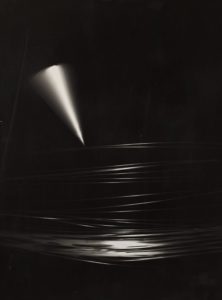
Untitled (Cone and light)
-
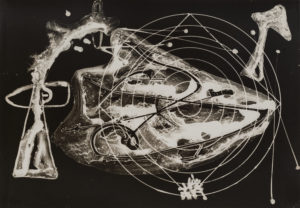
Untitled (Abstraction with circular and square lines)
-
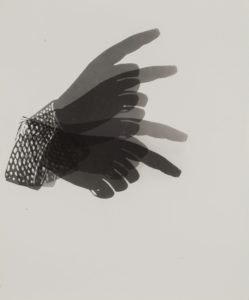
Untitled (Hands)
-
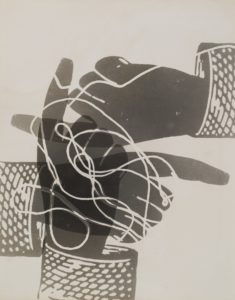
Untitled (Hands and string)
-
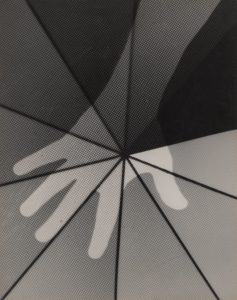
Untitled (Hand with crossed lines)
-
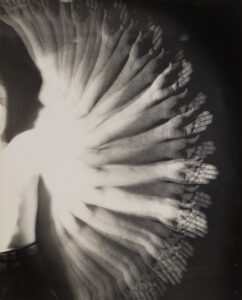
High Speed Photograph
-
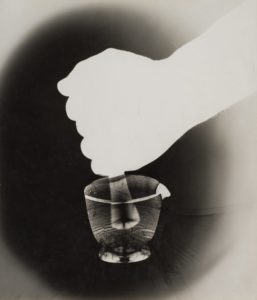
Untitled (Hand, mortar and pestle)
-
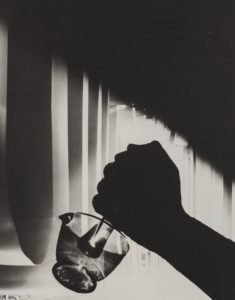
Untitled (Hand, mortar and pestle)
-
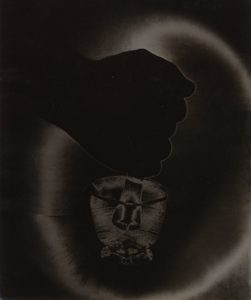
Untitled (Hand, mortar and pestle, dark)
-
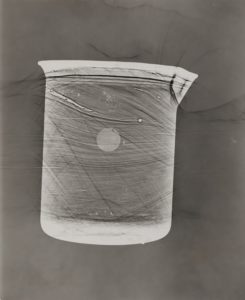
Untitled (Beaker)
-
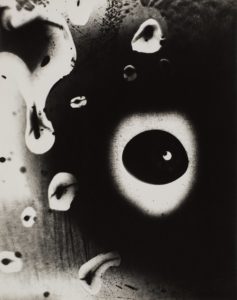
Untitled
-
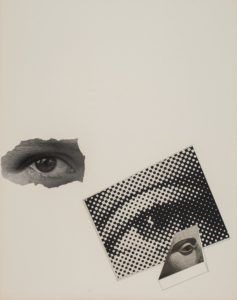
Untitled
-
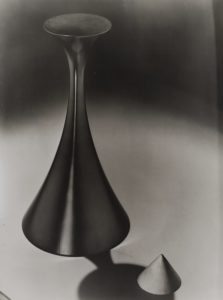
Untitled (Tapered object, small cone)
-
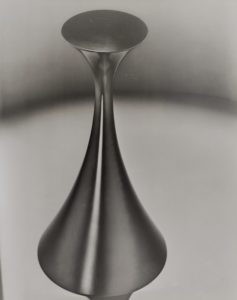
Untitled (Tapered object)
-
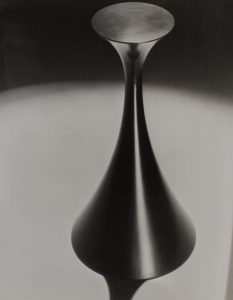
Untitled (Tapered object)
-
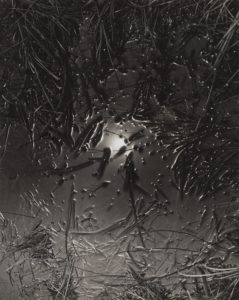
Untitled (Light reflection)
-
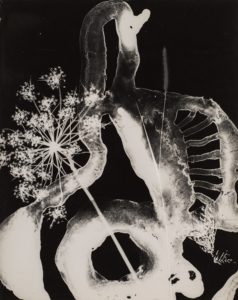
Untitled (Weed and organic abstract)
-
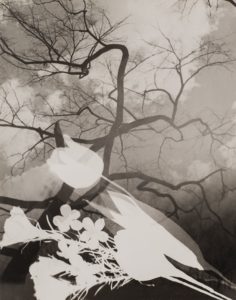
Untitled (Tree in winter with tulips)
-
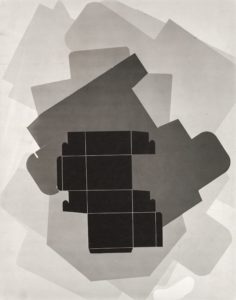
Untitled (Box template)
-
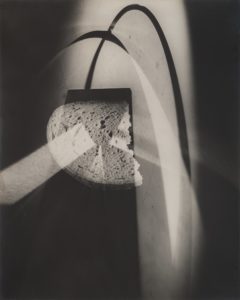
Bread and Light
-
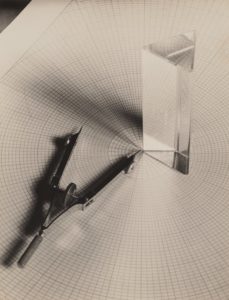
Untitled (Prism, compass, grid)
-
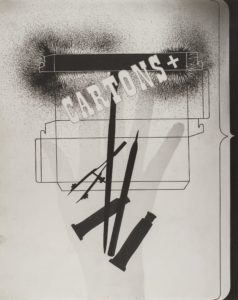
Untitled
-
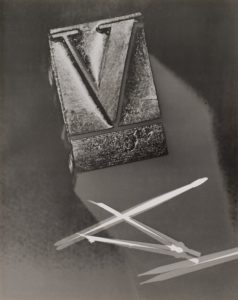
Untitled (Compass and letterpress type)
-
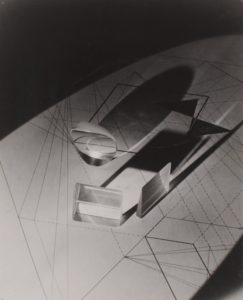
Light and line pattern
-
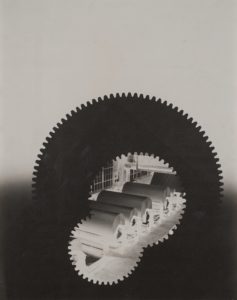
Untitled (Gears, paper rolls)
-
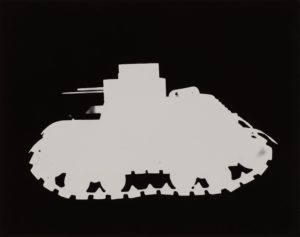
Untitled (Tank silhouette)
-
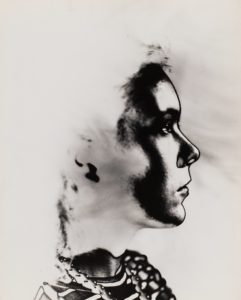
Solarized Portrait
-
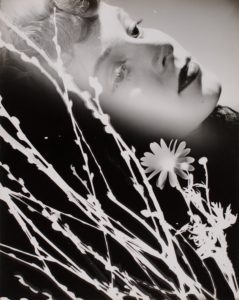
Untitled (Portrait)
-
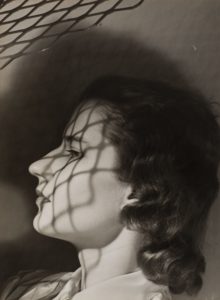
Untitled (Young Juliet Kepes)
-
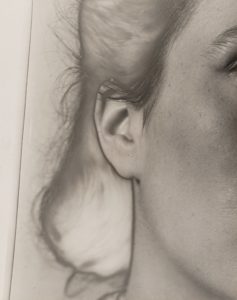
Untitled (Portrait)
-
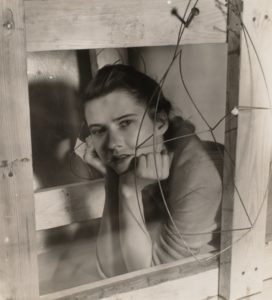
Untitled (Young Juliet Kepes)
-
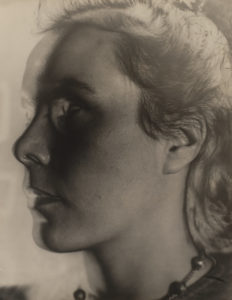
Untitled (Portrait)
-

Untitled (Bomb print 2)
-
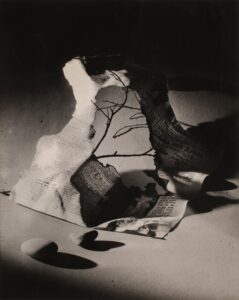
Untitled (Burnt newspaper and 2 pebbles)
-
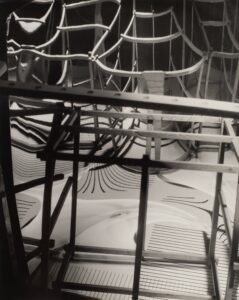
Untitled
-
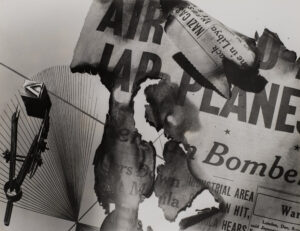
Untitled
-
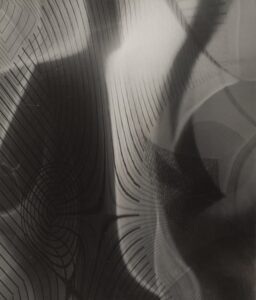
Optical Deformation